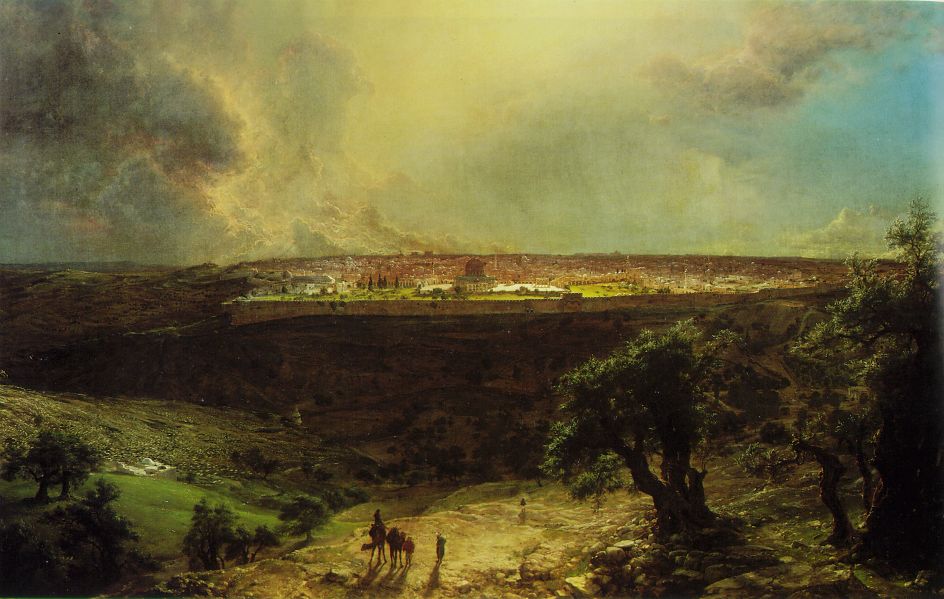[p]articularly before the Civil War, a sense of political and moral superiority rooted in a belief in America’s millennial promise instantiated in the trajectory of history drove Americans to the monuments and remnants of the past, of history, made palpable in Europe and the East. … Travel fits into this scheme as an excursion into history, into the linear progression from which the role of the United States in God’s grand design for the human race becomes visible.[1]
Just as one’s desire to define oneself as American through travel
to the “old world” to access their hereditary roots, so too
many Christians strove to discover and define themselves spiritually through
travel to the Holy Land to connect with their religious roots.
Source: Frederic Church, Jerusalem from the Mount of Olives, 1870, Nelson-Atkins Museum of Art.
In his book, Imagining the Holy Land: Maps, Models, and Fantasy Travels, Burke Long looks at American travel to the Holy Land during the nineteenth century. He notes that a shift in visions of the Holy Land occurred from the days of Colonial and even early post-colonial Americans to nineteenth century America. Long refers to “the idea of the Holy Land, as distinct from the physical place,” as a “cultural myth. ”[2] According to Long, “[b]iblical memory, romanticism, and thirst for the ‘real’ land of revolution influenced many Americans’ practical experiences of what they called Palestine, Canaan, Land of the Bible, or simply, the Holy Land. ”[3] As we have seen in reading Schriber, travel to Europe, especially for women had not been very accessible or fashionable prior to the nineteenth century. However, once it became so, more and more people took interest in seeing, and more importantly, experiencing the Holy Land for themselves. “And concurrently,” as Long writes, “infatuation with the Holy Land had shifted from conceiving it as a non-earthly Utopian space—imagined in poetry, song, and liturgy—to an idealized, touchable place—a fantasized reality on the ground. ”[4] This is quite evident in Eaton’s entries about her descriptions of personal emotions and reflections as well as through her descriptions of the pilgrims she encountered during her time there.
[1]Schriber, Mary S. Writing Home: American Women Abroad 1830-1920.
University Press of Virginia: Charlottesville, pg. 21.
[2]Long, Burke O. Imagining the Holy Land: Maps, Models, and Fantasy Travels.
Indiana University Press: Bloomington, pg. 1.
[3]Ibid, pg. 1.
[4]Ibid, pg. 2.
